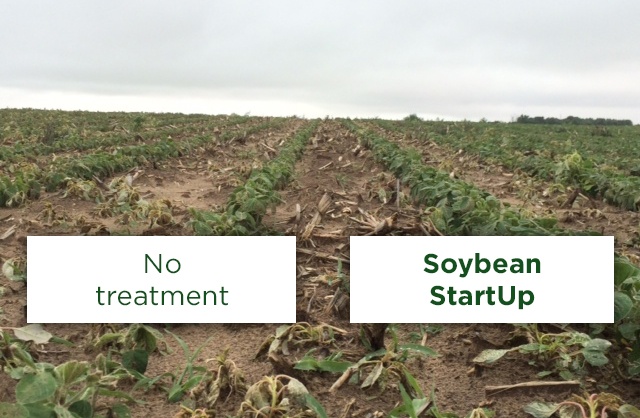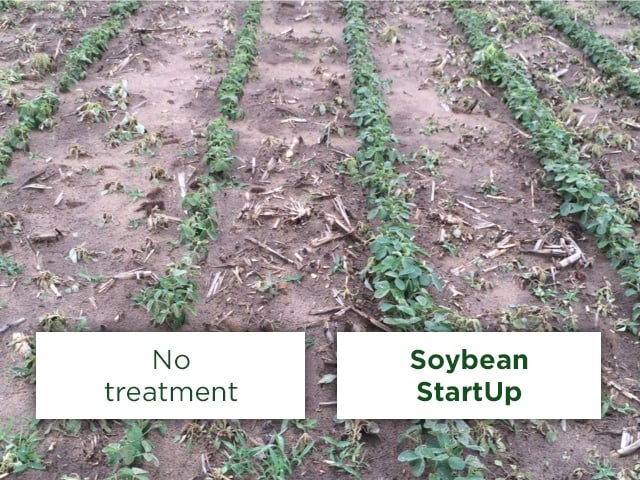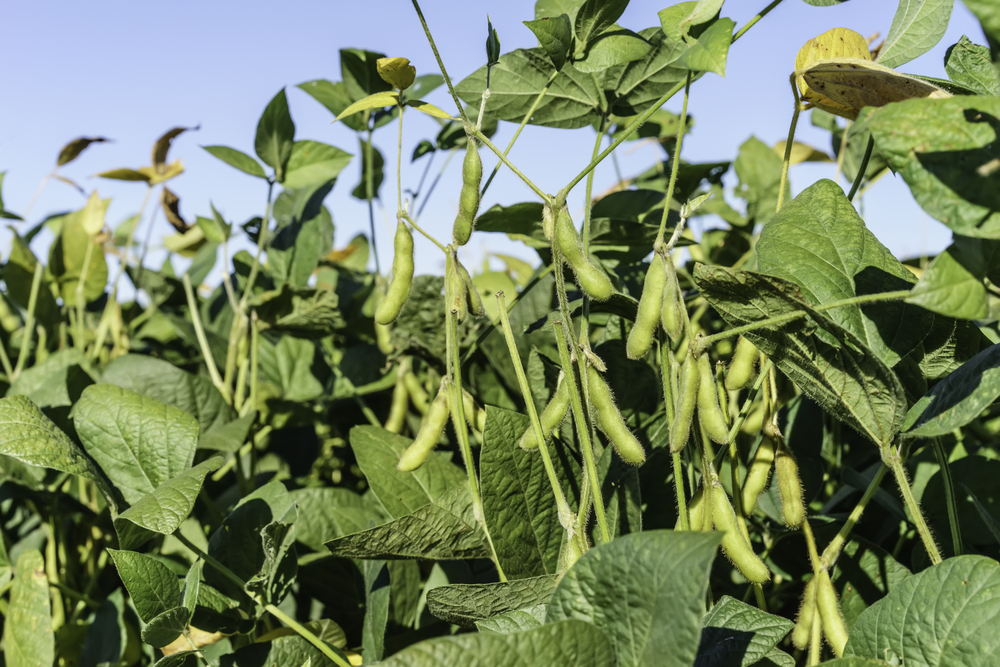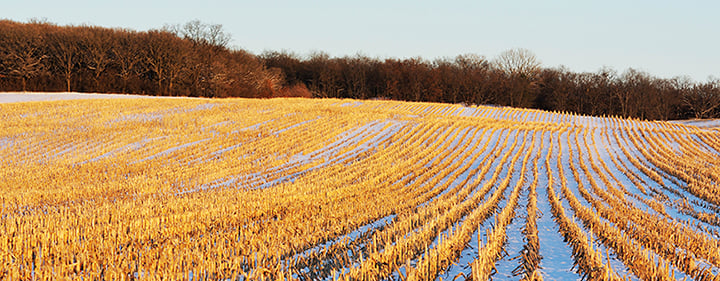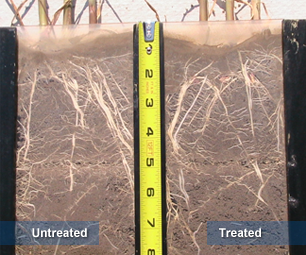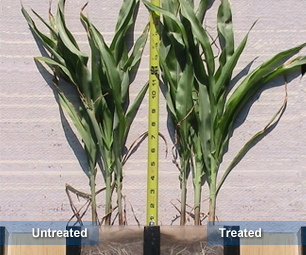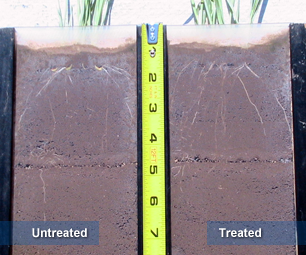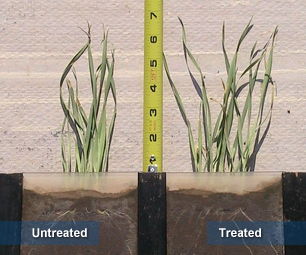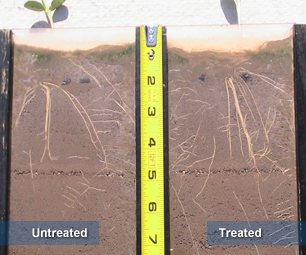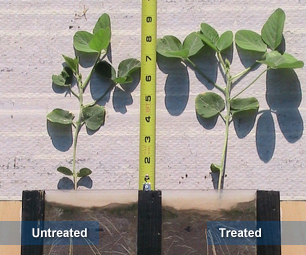Accomplish technology can be used to help release and mineralize nutrients in high residue fields. Given the high potassium levels in corn stover and the high potassium demand for a soybean crop, this is a perfect situation for using a residue application of Accomplish technology to improve plant performance (Figures 1-3) and gain a yield advantage in the coming soybean crop (Figure 4).
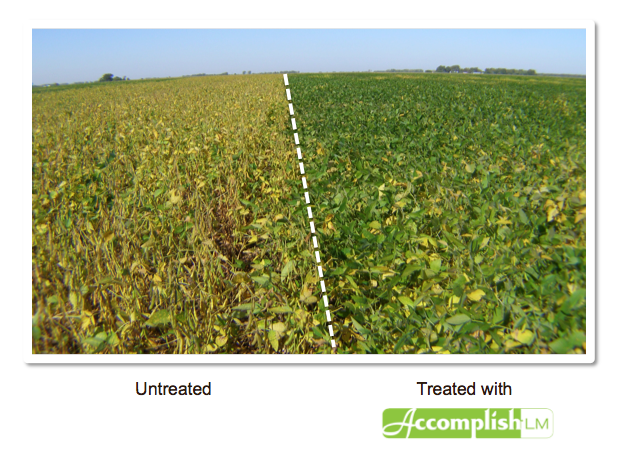
Figure 1. Soybeans, Wimbledon, ND (2011). Improved nutrient uptake in soybean treated with fall-applied Accomplish LM (right) compared to check (left). Accomplish LM was applied in the fall of 2010 at 2 quarts/acre with 1 gallon of 28% UAN and 10 gallons of water per acre**.
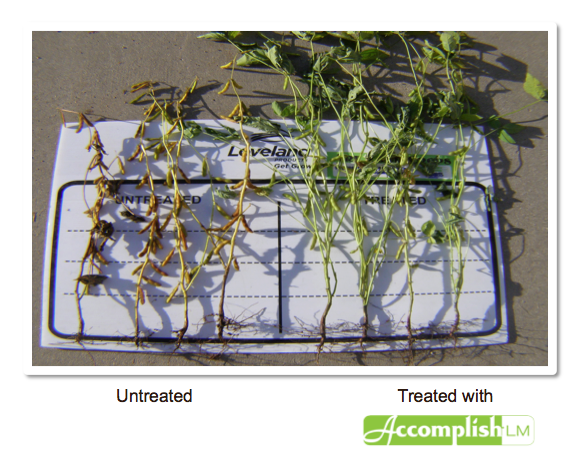
Figure 2. Soybeans, Wimbledon, ND (2011). Improved nutrient uptake and root growth during the growing season with a fall residue application of Accomplish LM (right) compared to check (left). Accomplish LM was applied in the fall of 2010 at 2 quarts/acre with 1 gallon of 28% UAN and 10 gallons of water per acre**.
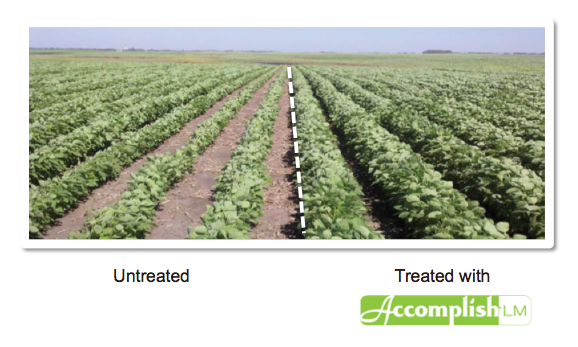
Figure 3. Soybeans, Wimbledon, ND (2011).Improved nutrient uptake with a fall residue application of Accomplish LM (right) compared to check (left). Accomplish LM was applied in the fall of 2010 at 2 quarts/acre with 1 gallon of 28% UAN and 10 gallons of water per acre**.
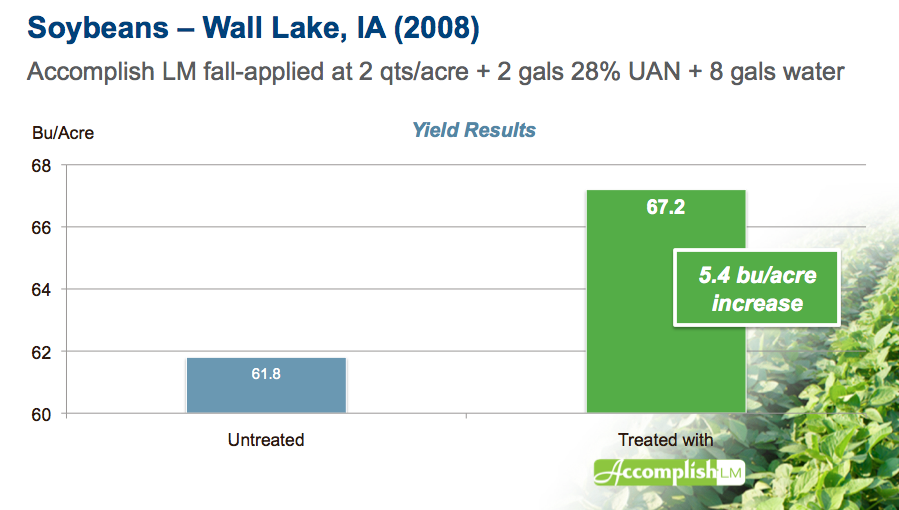
Figure 4. Soybean yield results, Wall Lake, Iowa (2008). Accomplish LM was associated with the highest yield compared to check (average yield from two check strips adjacent to the Accomplish LM-treated strip) in this trial of soybean grown on corn residue.
Residue applications can be made in the fall, winter, or spring. By using Accomplish technology in their nutrient mineralization programs, growers can speed residue breakdown and release valuable nutrients for a top soybean yield next season.
**Extract PBA, which combines Accomplish LM and ammonium thiosulfate, has been launched since the writing of this blog article. It is now the recommended residue treatment from Agricen.**
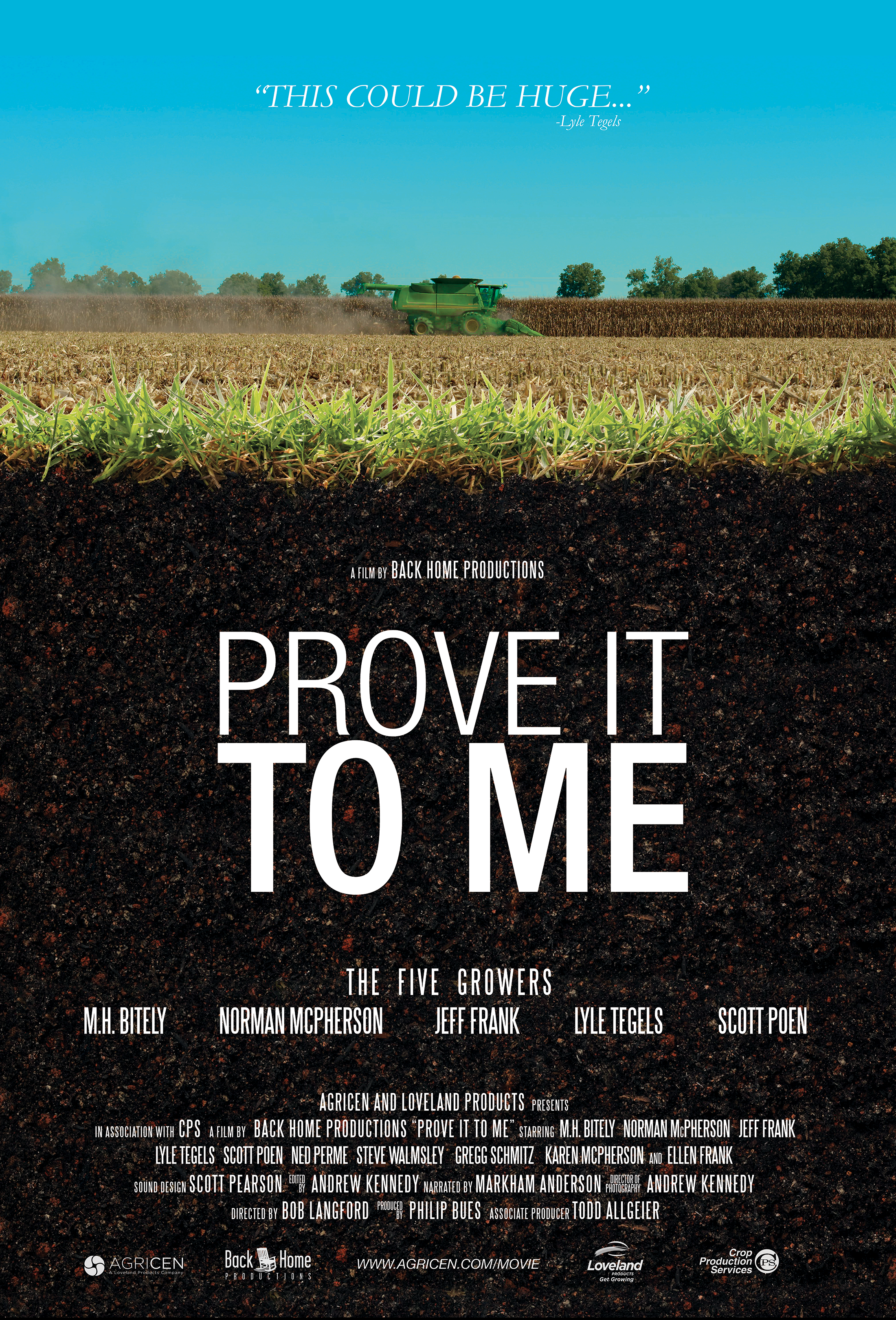 We are very excited to introduce “Prove It to Me,” a new film that follows five farmers through the 2015 growing season—from planning and planting to growth and harvest.
We are very excited to introduce “Prove It to Me,” a new film that follows five farmers through the 2015 growing season—from planning and planting to growth and harvest.





![[Trial Results] Soybean Startup Program Is a Standout in the Field](http://cdn2.hubspot.net/hubfs/269648/blog-files/soybean_startup_1.jpg)

